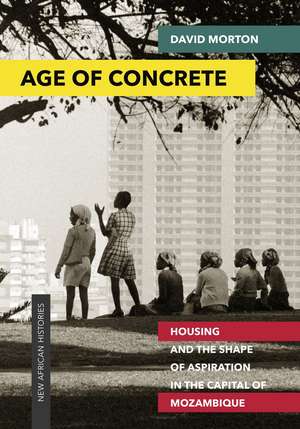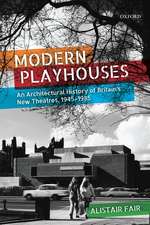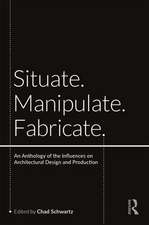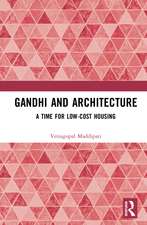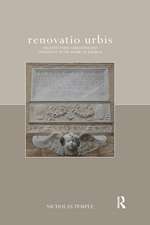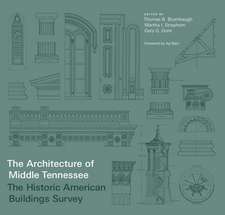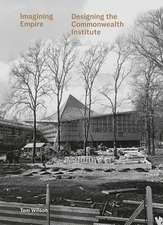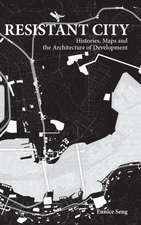Age of Concrete: Housing and the Shape of Aspiration in the Capital of Mozambique: New African Histories
Autor David Mortonen Limba Engleză Paperback – 16 iul 2019
Age
of
Concreteis
a
history
of
the
making
of
houses
and
homes
in
the
subúrbios
of
Maputo
(Lourenço
Marques),
Mozambique,
from
the
late
1940s
to
the
present.
Often
dismissed
as
undifferentiated,
ahistorical
“slums,”
these
neighborhoods
are
in
fact
an
open-air
archive
that
reveals
some
of
people’s
highest
aspirations.
At
first
people
built
in
reeds.
Then
they
built
in
wood
and
zinc
panels.
And
finally,
even
when
it
was
illegal,
they
risked
building
in
concrete
block,
making
permanent
homes
in
a
place
where
their
presence
was
often
excruciatingly
precarious.
Unlike many histories of the built environment in African cities,Age of Concretefocuses on ordinary homebuilders and dwellers. David Morton thus models a different way of thinking about urban politics during the era of decolonization, when one of the central dramas was the construction of the urban stage itself. It shaped how people related not only to each other but also to the colonial state and later to the independent state as it stumbled into being.
Original, deeply researched, and beautifully composed, this book speaks in innovative ways to scholarship on urban history, colonialism and decolonization, and the postcolonial state. Replete with rare photographs and other materials from private collections,Age of Concreteestablishes Morton as one of a handful of scholars breaking new ground on how we understand Africa’s cities.
Unlike many histories of the built environment in African cities,Age of Concretefocuses on ordinary homebuilders and dwellers. David Morton thus models a different way of thinking about urban politics during the era of decolonization, when one of the central dramas was the construction of the urban stage itself. It shaped how people related not only to each other but also to the colonial state and later to the independent state as it stumbled into being.
Original, deeply researched, and beautifully composed, this book speaks in innovative ways to scholarship on urban history, colonialism and decolonization, and the postcolonial state. Replete with rare photographs and other materials from private collections,Age of Concreteestablishes Morton as one of a handful of scholars breaking new ground on how we understand Africa’s cities.
Din seria New African Histories
- 19%
 Preț: 479.48 lei
Preț: 479.48 lei -
 Preț: 230.82 lei
Preț: 230.82 lei -
 Preț: 231.49 lei
Preț: 231.49 lei -
 Preț: 251.50 lei
Preț: 251.50 lei -
 Preț: 230.40 lei
Preț: 230.40 lei -
 Preț: 253.77 lei
Preț: 253.77 lei -
 Preț: 256.80 lei
Preț: 256.80 lei -
 Preț: 252.70 lei
Preț: 252.70 lei -
 Preț: 251.71 lei
Preț: 251.71 lei -
 Preț: 251.33 lei
Preț: 251.33 lei -
 Preț: 213.96 lei
Preț: 213.96 lei -
 Preț: 252.96 lei
Preț: 252.96 lei -
 Preț: 230.40 lei
Preț: 230.40 lei -
 Preț: 270.07 lei
Preț: 270.07 lei -
 Preț: 272.24 lei
Preț: 272.24 lei -
 Preț: 286.29 lei
Preț: 286.29 lei -
 Preț: 268.01 lei
Preț: 268.01 lei -
 Preț: 284.24 lei
Preț: 284.24 lei -
 Preț: 265.95 lei
Preț: 265.95 lei -
 Preț: 262.62 lei
Preț: 262.62 lei -
 Preț: 255.74 lei
Preț: 255.74 lei - 23%
 Preț: 459.88 lei
Preț: 459.88 lei -
 Preț: 252.95 lei
Preț: 252.95 lei -
 Preț: 284.40 lei
Preț: 284.40 lei -
 Preț: 250.87 lei
Preț: 250.87 lei -
 Preț: 263.56 lei
Preț: 263.56 lei -
 Preț: 266.36 lei
Preț: 266.36 lei -
 Preț: 271.96 lei
Preț: 271.96 lei - 23%
 Preț: 466.77 lei
Preț: 466.77 lei -
 Preț: 266.36 lei
Preț: 266.36 lei -
 Preț: 250.50 lei
Preț: 250.50 lei -
 Preț: 360.58 lei
Preț: 360.58 lei -
 Preț: 266.36 lei
Preț: 266.36 lei -
 Preț: 266.36 lei
Preț: 266.36 lei - 23%
 Preț: 458.70 lei
Preț: 458.70 lei - 23%
 Preț: 463.18 lei
Preț: 463.18 lei - 23%
 Preț: 462.03 lei
Preț: 462.03 lei - 23%
 Preț: 459.88 lei
Preț: 459.88 lei
Preț: 209.91 lei
Preț vechi: 255.98 lei
-18% Nou
Puncte Express: 315
Preț estimativ în valută:
40.18€ • 41.87$ • 33.45£
40.18€ • 41.87$ • 33.45£
Carte disponibilă
Livrare economică 14-28 decembrie
Livrare express 30 noiembrie-06 decembrie pentru 42.88 lei
Preluare comenzi: 021 569.72.76
Specificații
ISBN-13: 9780821423684
ISBN-10: 0821423681
Pagini: 336
Ilustrații: 72
Dimensiuni: 178 x 254 x 18 mm
Greutate: 0.79 kg
Editura: Ohio University Press
Colecția Ohio University Press
Seria New African Histories
ISBN-10: 0821423681
Pagini: 336
Ilustrații: 72
Dimensiuni: 178 x 254 x 18 mm
Greutate: 0.79 kg
Editura: Ohio University Press
Colecția Ohio University Press
Seria New African Histories
Recenzii
“Morton’s
argument,
delivered
with
passion
and
power,
gives
life
to
a
nuanced,
deeply
personal
understanding
of
how
ordinary
residents
of
disadvantaged
urban
communities
not
only
make
their
neighborhoods—they
reframe
the
everyday
political
order.
The
stories
he
tells
resonate
across
the
continent.”—Garth
Myers,
author
ofAfrican
Cities:
Alternative
Visions
of
Urban
Theory
and
Practice
Notă biografică
David Morton is assistant professor of African history at the University of British Columbia. As a journalist prior to his academic career, he wrote for publications such as Architectural Record, the New Republic, and Foreign Policy, and in Mozambique contributed to IRIN, the humanitarian news service.
Descriere
Age of Concrete is a history of the making of houses and homes in the subúrbios of Maputo (Lourenço Marques), Mozambique, from the late 1940s to the present. Often dismissed as undifferentiated, ahistorical “slums,” these neighborhoods are in fact an open-air archive that reveals some of people’s highest aspirations. At first people built in reeds. Then they built in wood and zinc panels. And finally, even when it was illegal, they risked building in concrete block, making permanent homes in a place where their presence was often excruciatingly precarious.
Unlike many histories of the built environment in African cities, Age of Concrete focuses on ordinary homebuilders and dwellers. David Morton thus models a different way of thinking about urban politics during the era of decolonization, when one of the central dramas was the construction of the urban stage itself. It shaped how people related not only to each other but also to the colonial state and later to the independent state as it stumbled into being.
Original, deeply researched, and beautifully composed, this book speaks in innovative ways to scholarship on urban history, colonialism and decolonization, and the postcolonial state. Replete with rare photographs and other materials from private collections, Age of Concrete establishes Morton as one of a handful of scholars breaking new ground on how we understand Africa’s cities.
Unlike many histories of the built environment in African cities, Age of Concrete focuses on ordinary homebuilders and dwellers. David Morton thus models a different way of thinking about urban politics during the era of decolonization, when one of the central dramas was the construction of the urban stage itself. It shaped how people related not only to each other but also to the colonial state and later to the independent state as it stumbled into being.
Original, deeply researched, and beautifully composed, this book speaks in innovative ways to scholarship on urban history, colonialism and decolonization, and the postcolonial state. Replete with rare photographs and other materials from private collections, Age of Concrete establishes Morton as one of a handful of scholars breaking new ground on how we understand Africa’s cities.
